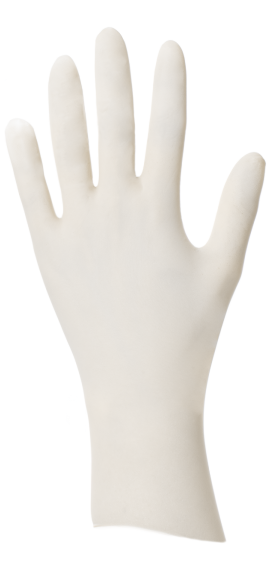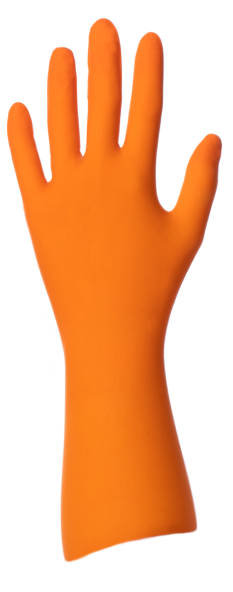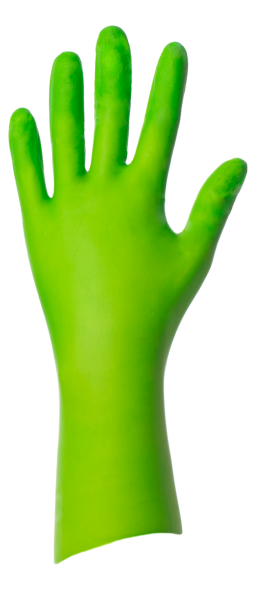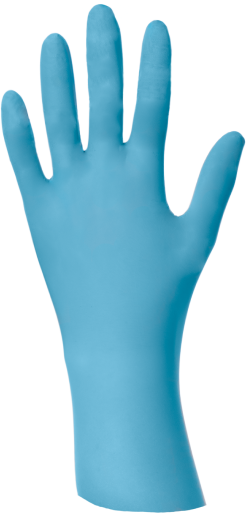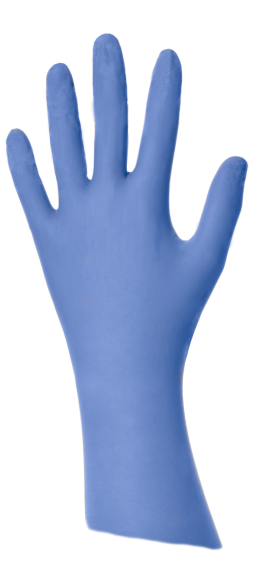WHICH PROTECTIVE GLOVES AGAINST BIOLOGICAL RISKS?
Biological risk is the risk of being accidentally exposed (through air, digestive, skin or mucosal contact) to biological agents that may have adverse effects on human health.
It is therefore essential to select biological protective gloves against biological risks, designed for use in the laboratory and providing protection for people and processes.
WHAT IS BIOLOGICAL RISK?
According to the European Directive 2000/54/EC (amended by the Directive (EU) 2020/739) on "the protection of workers from risks related to exposure to biological agents at work", biological pathogens are microorganisms (including genetically modified microorganisms and highly pathogenic microorganisms and toxins - MOTs), cell cultures or human endoparasites.
It can be parasites, bacteria, fungi, viruses but also prions (or Non-Conventional Transmissible Agents – NCTAs), mold, yeast etc.
Hazards frequently identified as related to biological agents are infectious diseases, immuno-allergic pathologies, toxic pathologies, poisoning or even certain cancers... including the risks of damage to the environment in the event of accidental releases.
There is a worldwide consensus on the diseases classification system into 4 risk groups ranging from level 1 for minimum biological risk to level 4 for extreme biological risk. The definition of each level of risk can be found in the European Directive 2000/54/EC as well as in the guide of the American Institute of Health (NIH) (https://osp.od.nih.gov/wp-content/uploads/NIH_Guidelines.pdf).
Laboratory Biosafety Levels (BSL) are classified from BSL-1 to BSL-4. Sometimes, the "P" for "Pathogen" followed by the class number also designates the level of biological agents handled within the laboratory (e.g. P3 Laboratory for Level 3 Laboratory).
The biological hazard is identified by the opposite international symbol:
WHO CAN BE EXPOSED TO BIOLOGICAL RISKS?
Exposure to biological risk is very common when carrying out laboratory work. It can occur whether in Medical Biology Laboratories (MBL), pathological anatomy and cytology laboratories (AnaPath), Central Sterile Services Departments (CSSD), veterinary analysis laboratories, industrial and environmental analysis laboratories, research laboratories, animal facilities and more generally professional activities where there is a contact with animals, greenhouses, food production facilities, waste or wastewater treatment facilities, etc.
Most exposed workers to biological hazards needing to be protected, are those who handle these hazardous biological agents. But they are not the only ones who need to be protected against biological risks! Indeed, the employer should identify the staff working in the same premises but on different tasks, couriers transporting samples, administrative staff as well as maintenance and servicing staff (whether internal to the company or external staff, i.e., working on behalf of an external company).
Accidental exposure linked to non-compliance with workplace instructions and/or good handling practices in the workplace should not be ignored as they can lead to contamination of the relatives of the staff concerned.
HOW TO PREVENT EXPOSURE TO BIOLOGICAL HAZARDS IN THE LABORATORY?
Handle organic material cannot be done without taking precautions such as:
- The ban of eating, drinking, smoking to avoid ingestion or contact with a biological agent.
- Regular and meticulous hand washing.
- An identification (of biological agents) and a rigorous assessment by the employer of the risks affecting the organization of work leading to the adaptation of workstations and the equipment used in the context of the prevention of occupational risks.
This risk assessment based on the hazardous biological agent’s identification, the level of exposure and the seriousness of the risk must lead to:
- Employee medical monitoring as part of occupational medical prevention.
- Safety trainings provided to laboratory staff, regularly renewed and adapted to the tasks performed on the workstation.
- Collective protection measures put in place and, if necessary, Personal Protective Equipment (PPE) adapted to the identified biological hazards such as biological protective gloves.
It should be noted that, before wearing single-use gloves, specific risks education and training on the procedure to put on and remove them safely should be provided.
WHICH PROTECTIVE GLOVES AGAINST BIOLOGICAL RISKS?
Biological protective gloves must be carefully selected according to the requirements of the tasks related to the activity (dexterity, increased protection against chemical and/or biological risks).
Protective gloves registered as Personal Protective Equipment (PPE) category III (Complex design) in accordance with Regulation (EU) 2016/425 should be worn in the context of activities with a high biological risk. However, be careful to not forget the risk associated with the handling of chemicals necessary for analysis or used during the disinfection or decontamination of equipment and premises. It should therefore be ensured that single-use gloves are designed both for protection against chemical risk in accordance with ISO 374-1:2016+A1:2018 and against biological risk.
The single-use gloves must meet the requirements of ISO 374 norm, including Part 2 designated by ISO 374-2:2019 relating to the "determination of the resistance to penetration" of single-use gloves and Part 5 designated by ISO 374-5:2016 for the "terminology and performance requirements for risks against micro-organisms" of single-use protective gloves.
Single-use nitrile and nitrile/neoprene gloves brands SHIELDskin™, SHIELDskin CHEM™, and ecoSHIELD™ Eco Nitrile PF 250 gloves, comply with ISO 374-5:2016 and have an Acceptable Quality Level (AQL) of 0.25 which is the level 3 according to ISO 374-2:2019. This level of protection for standard laboratory gloves, never achieved before, provides additional confidence in meeting biosecurity.
All SHIELD Scientific single-use gloves are ISO 374-2:2019 compliant, virus resistant in accordance with ISO 16604:2004 Procedure B (Read our article to better understand viral penetration testing for gloves) providing a level of compliance, comfort and protection never achieved before.
Select the appropriate disposable glove for biohazard protection from the SHIELD Scientific Glove Selection Guide or contact us for more information.

